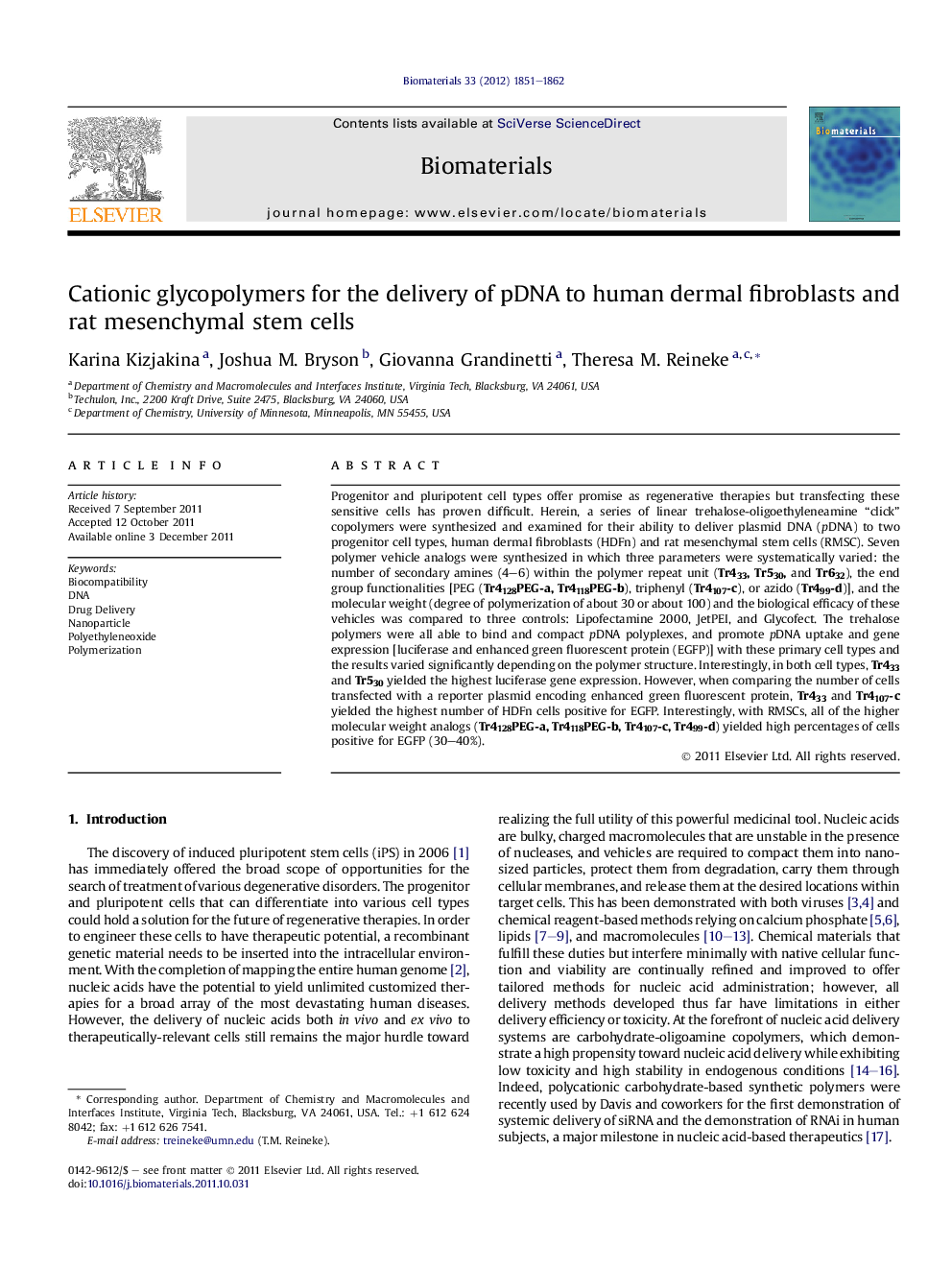| کد مقاله | کد نشریه | سال انتشار | مقاله انگلیسی | نسخه تمام متن |
|---|---|---|---|---|
| 7168 | 537 | 2012 | 12 صفحه PDF | دانلود رایگان |

Progenitor and pluripotent cell types offer promise as regenerative therapies but transfecting these sensitive cells has proven difficult. Herein, a series of linear trehalose-oligoethyleneamine “click” copolymers were synthesized and examined for their ability to deliver plasmid DNA (pDNA) to two progenitor cell types, human dermal fibroblasts (HDFn) and rat mesenchymal stem cells (RMSC). Seven polymer vehicle analogs were synthesized in which three parameters were systematically varied: the number of secondary amines (4–6) within the polymer repeat unit (Tr433, Tr530, and Tr632), the end group functionalities [PEG (Tr4128PEG-a, Tr4118PEG-b), triphenyl (Tr4107-c), or azido (Tr499-d)], and the molecular weight (degree of polymerization of about 30 or about 100) and the biological efficacy of these vehicles was compared to three controls: Lipofectamine 2000, JetPEI, and Glycofect. The trehalose polymers were all able to bind and compact pDNA polyplexes, and promote pDNA uptake and gene expression [luciferase and enhanced green fluorescent protein (EGFP)] with these primary cell types and the results varied significantly depending on the polymer structure. Interestingly, in both cell types, Tr433 and Tr530 yielded the highest luciferase gene expression. However, when comparing the number of cells transfected with a reporter plasmid encoding enhanced green fluorescent protein, Tr433 and Tr4107-c yielded the highest number of HDFn cells positive for EGFP. Interestingly, with RMSCs, all of the higher molecular weight analogs (Tr4128PEG-a, Tr4118PEG-b, Tr4107-c, Tr499-d) yielded high percentages of cells positive for EGFP (30–40%).
Journal: Biomaterials - Volume 33, Issue 6, February 2012, Pages 1851–1862